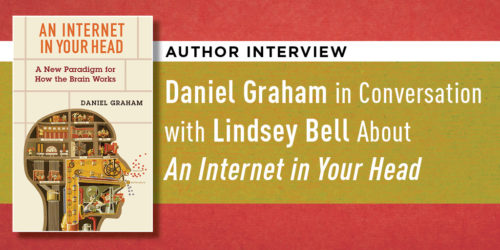Neurogastronomy: Aging, Flavor, and Taste
We conclude our week-long feature on Neurogastronomy: How the Brain Creates Flavor and Why It Matters, by Gordon Shepherd fittingly enough with an excerpt from the final chapter. In the chapter, “Why Flavor Matters,” Shepherd discusses how perceptions of flavor and taste change as a person ages. In this excerpt, he consider flavor and old age:
In Shakespeare’s day, with no real medicines and the average life span probably around 40 years, old age left most people in a ravaged state. In our day, there are many in their eighties and nineties still going strong. However, there are also many who are incapacitated or ill with one of the many infirmities of age. An overriding concern for their loved ones is a failure to thrive. This may have an organic cause, but in many cases its cause may be a loss of interest in food because of its lack of flavor. This afflicts many old people, both in hospitals and at home.
There is increasing interest in identifying these cases and treating them. In many cases we know the causes. On average, sensory abilities decline in later years. Some people fortunately may be little affected, but many suffer signifi cant losses by natural ageing, quite apart from a disease process. Richard Doty of the Taste and Smell Center in Philadelphia has documented this with his Sniffi n’ Sticks tests and has shown a decline in smell sensitivity in the eighties and nineties. Diseases take their toll. It is now well documented that an early sign of Alzheimer’s disease is a loss of smell, and the same occurs in other diseases such as Parkinson’s.
Given the key role of smell in flavor, it is therefore not surprising that many older and ill people lose their sense of flavor. We have noted in the introduction that a sudden loss of the sense of smell in younger adults can be devastating because of the loss of flavor, and there can be a similar effect in the aged. Failure to thrive can have many causes, but loss of flavor is one that is potentially treatable and should be checked first. Treating it depends on the person’s natural preferences, but care has to be taken because some of the common ways of increasing flavor, such as adding salt, may be proscribed by the individual’s medical condition.
Recent studies of Alzheimer’s disease are revealing new and unexpected depths in its relation to the human brain flavor system. Jennifer Stamps and Linda Bartoshuk at the University of Florida have found, in studying flavor perception in a population of Alzheimer’s patients, that some people who experienced a loss of taste also had a loss of retronasal smell for some foods, and that this loss reduced the flavor. Foods with strong associated touch sensations (nose- feel) were least affected. This suggested that it might be possible to enhance flavor in these subjects by specifically adding a “mouth- sense” stimulant such as pepper to the food. They found that adding the pepper to grape jelly as a test food gave an enhanced perception of the grape flavor because of the retronasal smell from the mouth, but it had no effect on the smell of the grape jelly when it was sniffed. This study thus adds to the ways that different senses can interact with one another to produce the kind of supra- additive effects discussed in chapter 14, and it indicates a strategy for helping with patients who are failing to thrive. It is also a reminder that one needs to test for multiple sensory losses in the aging and ill.
In summary, in treating failure to thrive, a good rule of thumb may be to reactivate the food cravings of childhood, enhancing the senses that contribute to flavor with strong smells, strong tastes, crunchy texture,
bright colors, pleasant music— and talking pleasantly together as you eat the shared meal. Understanding the human brain flavor system can be just as important for the end of life as for the beginning.



